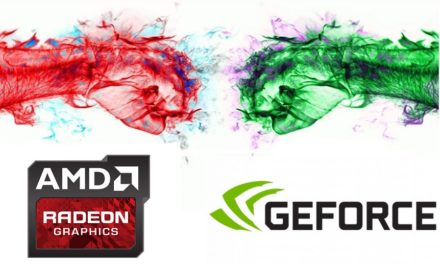
We tested the GK104: GeForce GTX 680 and high-end guns
It's time! We waited a long time for it, we heard a lot about it from many places, but finally the architecture of NVIDIA called Kepler, which can be considered the successor of Fermi, has arrived. Or not? In our article, not only do we make things right about the technology, but of course we take a look at all the features of the GeForce GTX 104 card codenamed GK680, and in addition to consumption and warm-up, we also performed a performance test in many ways. Let's cut into it!

Technológia
So far, the consensus has been that in the long run, the overall computing power of the GPU represents a higher value than the speed shown in three-dimensional games. This trend has had a significant impact on NVIDIA Fermi graphics cards, however, the first Kepler chip broke this principle. It will be clear in a few pages whether it was worth taking this step.

Getting to know the GK104 GPU
The GeForce GTX 680 video card is based on the previously mentioned GK104 graphics processor. The chip, made with TSMC’s 28nm manufacturing technology, is 294 square millimeters in size and is made up of 3,54 billion transistors. Compared to AMD's Tahiti codenamed solution, this is quite a good value - it can be reflected primarily in production costs. The most striking parameter of the GPU is the 1536 CUDA core, which is three times more than the GeForce GTX 580. The chip itself has 4 GPCs (Graphics Processing Cluster) where two SMXs (Shader Multiprocessors) are housed. The SMX includes a PolyMorph 2.0 engine, an instruction cache, 192 CUDA cores, 16 texturizers, and of course a first-level cache. Here we would note that the Shader clock used so far is a thing of the past, so now all the components of the chip follow the same frequency, which is actually a good thing in terms of scheduling.
[+]
Save in NVIDIA mode
Based on past experience, we can see that the chip that forms the basis of the new cannon now has surprisingly favorable physical parameters. Compared to the GeForce GTX 280, 480 and 580 cards, the rookie moves in a completely different category. We will now briefly present the developments and innovations through which the engineers managed to control the number of transistors and the size of the chip.
[+]
Each Shader Multiprocessor boasts a tessellator unit, meaning a total of 8 processors. If we just look at the numbers, we might think that there has been a setback at this point compared to the previous generation, but since the performance of the tessellators has doubled, overall, there is definitely progress to be made. The biggest change was in the backend. The GK104 GPU accesses 256GB of GDDR2 onboard memory via a 5-bit memory bus, with memory chips ticking at an effective 6,0 GHz. What does this mean in practice? Compared to the GeForce GTX 580, the width of the memory bus has been halved, but this has been fully offset by the blood-curdling memory clock. It’s also a huge flick, as AMD used to always be in a different dimension at this point, but now the Radeon HD 7970 has also been overtaken by half GHz. Optimizing the number of ROP units is not a significant saving either. So far, the homework is star-high five, but now comes the black soup.
Although the GeForce GTX 680 has extremely extensive API support (CUDA C, CUDA C ++, CUDA Fortran, OpenCL, DirectCompute, and Microsoft C ++ AMP), which are indeed key to general-purpose programmability, a few things are still very much missing. Double-precision computing power is an important factor in the GPGPU market for tasks rich in performance-intensive, floating-point computing, but also in general. At this point, the new Kepler tile can be attacked very seriously. The chip is theoretically capable of twenty-quarters of single-precision computing power with double-precision, which immediately strikes in the SiSoftware Sandra 2012 measurement program. The GeForce GTX 680 can't even beat its predecessor, and the AMD Radeon HD 7900 series moves in a completely different category. For further optimization, engineers did not implement ECC and virtual memory support, and the size of the various caches was limited to what was still acceptable, so that the GeForce GTX 580 had one and a half times more secondary storage than the newcomer. Mainly because of the lack of hardware virtual texturing, our hearts hurt, because doing so can cause a serious headache for the graphics processor to handle large amounts of textures. We are curious to see if there will be another fast during Doom 4. GPGPU performance is discussed on the next page. Foreword is that the champagne may be worth putting back in the fridge.

There is no shortage of innovation (even so)
Of course, the GeForce GTX 680 complies with the PCI Express 3.0 standard, and supports DirectX 11.1 as well as NVIDIA GPU Boost technology. The GPU Boost procedure allows the core clock to be set automatically. To ensure that performance is always at an ideal level, Kepler chips also take into account graphics processor load, power consumption and current temperature, and increase the pace accordingly. According to the official documentation, the clock increase takes place in 100 ms, so users do not notice anything about it. In practice, this means that the GK104 operates at a base base speed of 1006 MHz (core base), but after evaluating the former factors, the chip can boost this up to 1110 MHz (core boost). NVIDIA calculates that the average result achieved by the GPU Boost is 1056 MHz, but at a favorable rate, 1,10 GHz can indeed be caught. We saw an example of this on foreign computer sites on the day of the start. The pace is quite awesome, so it’s no wonder you’ve managed to approach the previous two-headed cannon, the GeForce GTX 590. The MSI Afterburner and EVGA Precision X tuning utilities can be set for maximum performance as well as clock offset.
The company wants to compensate fans with additional exclusive features due to the slip, such as Frame Rate Target, Adaptive Vertical Sync and NVENC. The first is practically nothing more than a modifiable FPS limit. This can be lucky if our favorite game spins at unnecessarily high speeds. You may want to consider using the Frame Rate Target if you want to reduce noise emissions and consumption.
Adaptive Vertical Sync, or dynamic enabling of vertical synchronization, is designed to maintain a steady speed. When the speed of a particular application drops below the monitor's refresh rate, you may want to turn off sync for better performance. The process essentially accomplishes this - without, of course, user intervention.

NVENC is a fixed-function unit designed to speed up the encoding of H.264 videos. Here, it is not primarily an outstanding increase in performance that should be expected, but rather that the workflow will be much less energy consuming than before. CyberLink MediaEspresso is already ready to take advantage of NVENC. Compared to the previous generation, the development is quite staggering. According to measurements from the German ComputerBase, the GeForce GTX 680 performed faster than its predecessor with more than 100 watts less power consumption.
For those who don’t even have enough, check out the FXAA Smoothing Procedure. The algorithm is based on the high shader performance of the GK104. FXAA achieves image quality like 4x MSAA (Multi-Sample AntiAliasing), but at a 60 percent higher rate. It is unfortunate, but the AMD ZeroCore consumption reduction procedure has not been incorporated in any form, but overall we have no reason to complain at all.

[+]
The GeForce GTX 680 supports NVIDIA 3D Vision Surround technology. Lucky owners can use up to four monitors for a better visual experience.
After a brief review, we can say that the NVIDIA GeForce GTX 680 is not by chance the most powerful single GPU card on the market, but 2GB of VRAM can become scarce in extremely high resolution. According to rumors, the Greens may even come up with a model equipped with 4GB of onboard memory later, but it’s no problem if that doesn’t happen after all. The partners have already completed a number of turbocharged variants.
The numbering of the tile used confirms that the GK104 represents the gamer line, which the GF104 and GF114 have already touched quite well. Accordingly, the first Kepler-based chip is not brilliant under GPGPU applications, but it is unbeatable in games, and chip size and power consumption have been distinctly appealing. At the same time, this reflects the fact that with the GCN chip, AMD has very strongly focused on meeting professional needs, the wider use of the GPU. Due to this, Tahiti-based cards offer less performance in most games than the GeForce GTX 104, which uses the GK680.




















